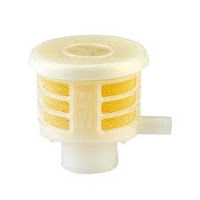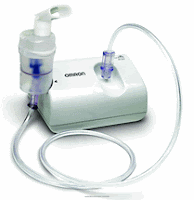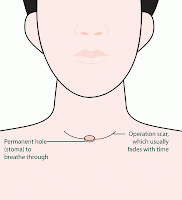A new school year - a new challenge. You might see your child having difficulties
with learning and memorizing new tings, remembering friends’ names, or missing
some staff in his/her school backpack. Why? There are few possible answers. Your
child may be eating inappropriately,
not getting enough physical activities
or sleep/rest. After checking off the
above factors you can look for some other solutions to help your child to
improve his/her memory and mental performance by exercising his/her brain and teaching
supportive techniques. Strong memory depends on the health and vitality of the
brain.

The human brain has an
astonishing ability to adapt and change known as neuroplasticity. With the
right stimulation, your brain can form new neural pathways, alter existing
connections, and adapt and react in ever-changing ways. The brain’s incredible
ability to reshape itself holds true when it comes to learning and memory. You
can harness the natural power of neuroplasticity to increase cognitive
abilities, enhance ability to learn new information, and improve memory. Let me
share my findings with you.
Healthy Diet - What kind?
- Look for
healthy fats - Omega-3. Much of a brain cell's structure is made up of
"healthy fats". The most important of these are the Omega-3
fatty acids. As your brain repairs itself and grows new neurons, it needs
an abundant supply of Omega-3 from your diet such as cold-water fish
salmon and albacore tuna, canola oil, soybeans, walnuts, wheatgerm, eggs,
and flaxseed oil.
- Provide antioxidants
to protect brain. Good sources of antioxidants include tea (especially
green tea), blueberries and other berries, red grapes, tomatoes, broccoli,
garlic, spinach, carrots, whole grains, and soy.
- Offer
high-tyrosine proteins to spark brain. Besides neurons, your brain
also includes important chemicals called "neurotransmitters" - messengers that carry brain signals from one
neuron to the next. You may have a great brain structure, but if your
supply of the different neurotransmitters is insufficient your brain won't
function properly. Some components of neurotransmitters, such as
tryptophan, can't be made within the body but must be consumed directly
from your diet. Others such as tyrosine can be made by the body but still
require the right foods in your diet. The best neurotransmitter-building
foods for boosting alertness, energy, and concentration include seafood,
meat, eggs, soy and dairy products. To avoid sabotaging yourself, eat the
low-fat, low salt varieties, e.g. lean cuts of meat or low-fat
cottage cheese.
- Supply water
to hydrate brain. As you probably know, most of your body is water. It
is very easy to not consume enough water and become dehydrated. Being even
slightly dehydrated decreases your mental energy and can impair your
memory. Drink at least three or four liters (quarts) of water a day.
- Deliver
vitamins and minerals. The most important vitamins for memory are Vitamins C, B12, and B6 and minerals: Iron (for women, especially) and Calcium. Deficiencies of either of these
have been shown to impair learning. The best way to deliver most important
vitamins and minerals is through a good diet, an easy way is to simply take a
multivitamin, calcium and iron supplement each day. Make sure you always take your
vitamins and minerals with food and not on an empty stomach. Not only will you
avoid a stomach ache, but vitamins and minerals need to combine with food in
your digestive system or they will be to a large degree wasted.
- Present fiber.
Fiber helps slow the absorption of sugar from your diet. Your brain
operates 100% on sugar. But the trick is that the sugar must be delivered
in a very steady stream and in the proper amount or your brain gets
overwhelmed. Eating enough fiber slows your digestion and results in the
sugar in your food being delivered into your bloodstream gradually. Foods
containing healthy amounts of fiber include dried fruits, e.g. raisins,
dates, prunes, and apricots, vegetables, e.g. green peas, broccoli, and
spinach, peas and beans, e.g. black-eyed peas, lima beans, and kidney
beans, nuts and seeds, e.g. flaxseed and almonds, whole fruit, e.g. apples
with the skin, oranges, avocados, kiwi, and pears, and whole wheat grains,
e.g. barley, brown rice, and the various whole wheat pastas and cereals.
When you exercise your body, you
exercise your brain. Regular exercise improves blood flow to the brain, and
improved blood flow means - improved thinking and memory. Treating your body
well can enhance your ability to process and recall information. Exercise may
also enhance the effects of helpful brain chemicals and protect brain cells.
Appropriate sleep and relaxation time
- Proper Sleep.
When you’re sleep deprived, your brain can’t operate at full capacity.
Creativity, problem-solving abilities, and critical thinking skills are
compromised. Whether you’re studying, working, or trying to juggle life’s
many demands, sleep deprivation is a recipe for disaster. Research shows that sleep is necessary for
memory consolidation, with the key memory-enhancing activity occurring during
the deepest stages of sleep. 1 to 3 years old child needs 12 to14 hours per
day, 3 to 6 years old – 10 to 12 hours, 7 to 12 years old – 10 to 11 hours, and
12 to 18 years old needs 8 to 9 hours. http://www.webmd.com/parenting/guide/sleep-children
- Relaxation/Fun
Time. When you think of ways to improve memory, do you think of
“serious” activities such as doing crossword or mastering
chess, or do more cheerful leisure like hanging out with
friends, going for a walk or some fun places? Studies show that a life
that’s full of friends and fun comes with cognitive benefits.
- Healthy
relationships. Humans are highly social animals. We’re not meant to
survive, let alone thrive, in isolation. Relationships stimulate our
brains - in fact, interacting with others may be the best kind of brain
exercise. Research shows that having meaningful relationships and a strong
support system are vital not only to emotional health, but also to brain
health. In a recent study from the Harvard School of Public Health, for
example, researchers found that people with the most active social lives
had the slowest rate of memory decline. There are many ways to start
taking advantage of the brain and memory-boosting benefits of socializing. Participate in community events, sign your child to a class she/he likes or meet friends more often. And if it's not possible, don’t overlook the value of a pet - especially the highly-social dog.

- Tons of Laughs.
It is commonly known that laughter is the best medicine, and that holds
true for the brain as well as the body. Unlike emotional responses, which
are limited to specific areas of the brain, laughter engages multiple
regions across the whole brain. Furthermore, listening to jokes and working
out punch lines activates areas of the brain vital to learning and
creativity. A psychologist Daniel Goleman said
“laughter…seems to help people think more broadly and associate more freely.” http://www.amazon.com/Emotional-Intelligence-Matter-More-Than/dp/055338371X That's what you can teach your child:
· Laugh at yourself. Share your
embarrassing moments. The best way to take ourselves less seriously is to talk
about the times when we took ourselves too seriously.
· Move toward laugh. When you hear laughter, seek it out and ask, “What’s funny?” Most of the time, people
are happy to share something funny because it gives them an opportunity to
laugh again.
· Spend time with fun, playful people.
These are people who laugh easily - both at themselves and at life’s
absurdities - and who routinely find the humor in everyday events. Their
playful point of view and laughter are contagious.
- Limited stress. Stress is one of the brain’s worst enemies. Over
time chronic stress destroys brain cells and damages
the hippocampus, the region of the brain involved in the formation of new
memories and the retrieval of old ones. In addition to stress, depression
takes a heavy toll on the brain. In fact, some of the symptoms of
depression include difficulty concentrating, making decisions, and
remembering things. If you are mentally sluggish because of depression,
seeking treatment will make a big difference in your cognitive abilities,
including memory.
Brain’s Exercises
When growing, your brain is
developing millions of neural pathways that help you process information
quickly, solve familiar problems, and execute familiar tasks with a minimum of
mental effort. But if you always stick to these well-worn paths, you aren’t
giving your brain the stimulation it needs to keep growing and developing. You
have to challenge your brain. Memory, like muscular strength, requires you to
“use it or lose it.” The more you work out your brain, the better you’ll be
able to process and remember information. The best brain exercising activities
break your routine and challenge you to use and develop new brain pathways. The
activity can be virtually anything, so long as it meets the following three
criteria:
· New. The activity needs to be something that’s unfamiliar and
out of your comfort zone.
· Challenging. Anything that takes some
mental effort and expands your knowledge will work, e.g. learning a new language, instrument, or sport, or
tackling a challenging crossword or Sudoku puzzle. http://www.superteacherworksheets.com/sudoku.html
· Fun. Physical and emotional enjoyment is
important in the brain’s learning process. The more interested and engaged you
are in the activity, the more likely you’ll be to continue doing it and the
greater the benefits you’ll experience. The activity should be challenging,
fun and enjoyable. Make an
activity more pleasurable by appealing to the senses - playing preferable music or rewarding a child afterwards with a favorite treat.
Use mnemonic devices to make
memorization easier. Mnemonics are clues of any
kind that help us remember something, usually by helping us associate the
information we want to remember with a visual image, a sentence, or a word.
· Visualize image. Associate a visual image
with a word or name to help you remember them better. Positive, pleasant images
that are vivid, colorful, and three-dimensional will be easier to remember,
e.g. to remember the name Rosa Parks and what she’s known for, picture a woman
sitting on a park bench surrounded by roses, waiting as her bus pulls up.
· Create acrostic. Make up a sentence in
which the first letter of each word is part of or represents the initial of
what you want to remember, e.g. “Righty tidy lefty loose” to memorize the lines
try to remember the notes R, T, L, L.
· Form acronym. An acronym is a word that
is made up by taking the first letters of all the key words or ideas you need
to remember and creating a new word out of them, e.g. the word “TEAM” to support a better teamwork: Together
Everyone Achieves More; “HOMES” to remember the names of the Great Lakes:
Huron, Ontario, Michigan, Erie, and Superior, “FAMILY” – Father And Mother Interacting
Lovingly Year-long; “F2F” – Face Two Face; “SLAP” – Sounds Like A Plan, “KID” – Keep It
Down; “PQ4R” - Preview,
Question, Read, Reflect, Recite, Review.
· Make rhymes and alliteration. Rhymes,
alliteration (a repeating sound or syllable), and even jokes are a memorable
way to remember more mundane facts and figures, e.g. the rhyme “Thirty days
hath September, April, June, and November” to remember the months of the year
with only 30 days in them.
· Create chunks. Chunking breaks a long
list of numbers or other types of information into smaller, more manageable
chunks, e.g. remembering a 10-digit phone number by breaking it down into three
sets of numbers: 646-678-5039 (as opposed to 6466785039).
· Use method of loci. Imagine placing the items you want to remember
along a route you know well or in specific locations in a familiar room or
building, e.g. for a shopping list, imagine bananas in the entryway to your
home, a puddle of milk in the middle of the sofa, eggs going up the stairs, and
bread on your bed.
http://en.wikipedia.org/wiki/Method_of_loci
Tips for enhancing the ability to learn and remember
1. Pay attention.
You can’t remember something if you never learned it, and you can’t learn
something - that is, encode it into your brain - if you don’t pay enough
attention to it. It takes about eight seconds of intense focus to process a
piece of information into your memory. If you’re easily distracted, pick a
quiet place where you won’t be interrupted.
2. Involve as many
senses as possible. Try to relate information to colors, textures, smells,
and tastes. The physical act of rewriting information can help imprint it onto
your brain. Even if you’re a visual learner, read out loud what you want to
remember. If you can recite it rhythmically, even better.
3. Relate
information to what you already know. Connect new data to information you
already remember, whether it’s new material that builds on previous knowledge,
or something as simple as an address of someone who lives on a street where you
already know someone. For more complex material, focus on understanding basic
ideas rather than memorizing isolated details. Practice explaining the ideas to
someone else in your own words.
4. Rehearse
information you've already learned. Review what you've learned the same day
you learn it, and at intervals thereafter. This “spaced rehearsal” is more
effective than cramming, especially for retaining what you've learned.






.jpg)
























































